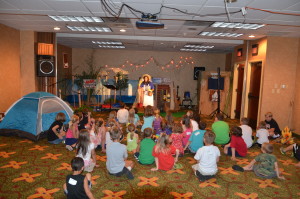There are over 6 billion people in the world and it is estimated that one in six (or 1 billion) profess Christ.
For several years now missiologists have provided information about the 10-40 window. This is a geographic designation 10 degrees south and 40 degrees north of the equator, and is inhabited by a vast number of people groups that have yet to be reached with the gospel. It is estimated that as many as two-thirds of the lost people in the world live in this window.
 Another window of opportunity to present the gospel is the 4-14 Window. This 4-14 window, however, is not a geographic location. The 4-14 window is a chronological, developmental window. This window identifies that children in the age bracket of 4-14 years have a 32% probability of accepting Jesus Christ as Savior. Researchers now suggest that adults 18 and over have only a 6% probability of accepting Jesus Christ as Savior.
Another window of opportunity to present the gospel is the 4-14 Window. This 4-14 window, however, is not a geographic location. The 4-14 window is a chronological, developmental window. This window identifies that children in the age bracket of 4-14 years have a 32% probability of accepting Jesus Christ as Savior. Researchers now suggest that adults 18 and over have only a 6% probability of accepting Jesus Christ as Savior.
While research into this phenomenon is recent, the phenomenon itself is as old as mankind. Developmental and educational psychologists in the 20th century discovered a fact of life built into humanity from creation: children grow and mature in a developmental sequence which leads them to be sensitive to and aware of spiritual influences in their middle to late childhood. This tendency is so strong that some educators assert that what a child believes by age 13 remains relatively unchanged throughout their life.
If evangelism is the process of individuals coming to understand the gospel and responding positively to it, how might we aid that process for our children?
First, it is always important to use simple, clear language when presenting the gospel. This is true whether we are focused on winning children or adults. This means we must avoid “Christianese”, with its tendency toward theological language and church slang that often seems obscure to those outside the Church. Using age appropriate lessons and visual illustrations, even acting out stories or playing games, may help overcome this difficulty.
Second, instruction that is simple and clear will aid the process of response to the gospel. A printed sample prayer can aid in reflection. Discipleship classes can be built around this simple, clear instruction, and can be tailored to specific age groups.
Third, age appropriate evangelism understands the implications of development while being sensitive to the 4-14 window. Children’s workers and pastors do not need to be trained psychologists to understand that children process information differently as they grow and develop. Noted psychologist Jean Piaget observed his own children and developed a broader understanding of the human development of thought. A very simplified description of his work shows four stages of development. While Piaget assigned a chronology to those stages, more recent investigations suggest that there can be significant individual variation within the middle childhood years, during which children in the United States begin the early years of elementary education.
Piaget’s Developmental Stages
Sensorimotor Stage 0-2 years
Largely non-verbal communication
The idea that objects to not cease to exist when out of sight develops
Preoperational Stage 2-7 years
Language and symbolic thought begin to emerge
Intuitive thought is favored over logical thought
Egocentric thought (If I feel this way, surely you do, too)
Concrete Operational Stage 7-11 years
Simplified use of time, space, volume and number
Begin to see the world from other perspectives
Formal Operations Stage 11+ years
Can now think on abstract principles and hypothetical possibilities
Inductive and deductive reasoning are now used